View Sample Results
Search by City
Search by Office
Search by Candidate
AN INVENTORY OF THE SCHOOLHOUSES OF MINNEAPOLIS, 1855-2000



Which schools were named after these people? 1 2 3
Early School Properties in what is now Minneapolis:
Schools in St. Anthony Township
- District #1 Section 2 NW 1/4, later moved to NW 1/4 Section 10
- District #2 Section 7 SE 1/4
- District #3 20th Ave. NE and Duluth tracks (22nd & Stinson)
Schools in Minneapolis Township
- District #8 Chicago Avenue & 46th Street, NW corner
- District #9 16th Ave. S. & 28th Street
- District #89 Glenwood Avenue, southeast corner of Xerxes
- District #26 Emerson & 44th Ave. N., Shingle Creek
- District #106 Sheridan & 24th Ave. N.
- District #117 Park Avenue & 38th St., north side of street
- District #121 Lowry Avenue & 2nd Street N.
- District #113, SW corner of Minnehaha Avenue & 38th St.
- District #110, NW corner of Minnehaha Avenue & 46th St.
- Centennial School 26th Ave. S. & Lake Street
- North Minneapolis (in 1859 Directory)
- Lower Minneapolis (1859 Directory), South Minneapolis (1865 Directory) 21st Ave. So. & 6th St.
Schools in Richfield Township
- District #110 NW 1/4 of Section 7, near Minnehaha Falls
- District #6, Richfield Mills, Lyndale & 54th St. So., SE corner
Vacant land
- Grant St., near Loring Park
- Marshall St., near 26th Ave. NE (Lot 2, Sec. 10, T29 R24)
The Mendenhall Settlement
(purchase arranged by R.J. Mendenhall, Treasurer of the School Board)
- Lots 1 & 2, Block 22, Minnehaha Addition (west side of 19th Avenue South, 5th & 6th lots)
- Block 18, Palmer's Addition (triangle: Hiawatha-38th Street-30th Avenue So.)
- Lot 11, Block 2, South Side Addition (northwest corner of 30th Avenue South & 27th Street is Lot 12; lot next north is #11)
Early School History
An early school was started on the east shore of Lake Harriet in 1836. Rev. J.D. Stevens was the teacher, and the students were Dakota Indians. The first public school opened on the Minneapolis side of the River in 1851. Miss Mary Schofield opened this school in a building on the river bank, around 2nd Street and 8th Avenue South. Mary E. Miller replaced Miss Schofield on Dec. 30, 1852. Several other schools opened in the next few years, for a few months at a time, and with varying degrees of success. One of them opened during the summer of 1853 near Minnehaha Falls, in the vicinity of 46th & Minnehaha Avenue. On March 1, 1856, the Legislature of Minnesota Territory authorized Hennepin County District #1 to raise money to build a schoolhouse. In May 1856 the voters approved building the school on Block 77 (where City Hall now stands). Building the school consumed 2 years, and it opened in June 1858, with about 400 children. The Union School burned down in 1864, with all the school system's records. The School Board leased a building on 2nd Avenue South and Washington that served nearby students while the new schoolhouse was built. Other properties, leased in North and South Minneapolis, accomodated students who lived further away. In 1866 the new Central Union School opened on the same site as the old school. A high school was started in the building in 1868 or 1869. In 1867, four new schools were built. Jackson, at 4th Street and 16th Avenue South; Lincoln, at Washington and 7th Avenues North; and the leased buildings in North Minneapolis and South Minneapolis were replaced by new schoolhouses. (see History of Minneapolis and Hennepin County, Isaac Atwater and John H. Stevens, Munsell Publishing Co., New York & Chicago, 1895)
School Bios
The land for the school was purchased April 27, 1874, and the building finished in 1875. Additions were built in 1884-1886, 1904 and 1923. The school was closed in 1972. Named for John Adams, 2nd President, born 1735.
Opened in 1990. The school was located at 1501 Aldrich Avenue North after 1993.
Agassiz was opened in 1912 as 2 portables, on 38th Street & Harriet. After the brick schoolhouse opened in 1922, the five portables that had accumulated on the site continued to serve as classrooms. Agassiz was a K-6 until the summer of 1981, when due to damage from a tornado in July, the school was closed permanently. Named for Louis Agassiz, naturalist, born in 1807.
A portable school, built and opened for classes in 1921. Alcott had 7 rooms at first, but by 1939 only three portables occupied this site. The school was closed in 1940, and the portables removed. Named for Louisa Mae Alcott, the author, born in 1832.
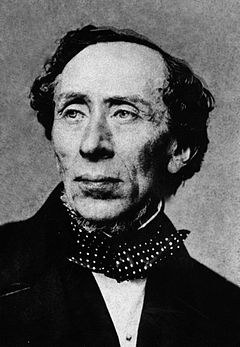
Built 1974-1975, and opened February 1976. Named for Hans Christian Andersen, Danish writer, born 1805.
- School A: 2727 10th Avenue South, Andersen Contemporary from 1979
- School B: 2726 12th Avenue South, Andersen Open from 1979
- School C: 1098 Andersen Lane. Closed in 1982.
- School D: 1100 Andersen Lane. Opened 1978. Re-named Learning Rock in 1993. Closed in 1996.
Built and opened in 1958. Named for Susan B. Anthony, fighter for women's rights, born 1820.
Built in 1960 to house St. Margaret's Academy. The Board of Education bought the school in 1974, and opened it as Anwatin Learning Center. Made a middle school serving grades 5-8 in 1975. Named after the Ojibway word for "calm after the storm".
Built and opened in 1951. An addition was built in 1954, and a 6-room portable also stood on the grounds. Named for Mrs. Maude Dunsmoor Armatage, Park Board Commissioner 1921-1951, and life-long resident of the area (born 1870).
Opened in November 1912 to accept children afflicted with anemia or tuberclosis. The building was originally Marcy school, and was renamed for Thomas Arnold, Master at Rugby school in England, born in 1795. In 1921 Arnold was renamed Trudeau School.
Built in 1924, opened in January 1925. The site included 3 portables and an addition in 1955. Named for John James Audubon, ornithologist, born in 1785.
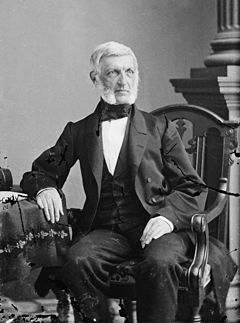 In 1875 Minneapolis Township built a wooden, two-room school, District #113, on the southwest corner of Minnehaha Avenue and 38th Street. The school became part of the city school system when the neighborhood was annexed in May 1887, and received the name "Bancroft" later in the year. Bancroft served 21 to 29 children from 1887 to 1890. Closed in 1890, this building was moved in 1894 to the grounds of Monroe School for use as an annex. The building now located at 38th & Minnehaha was Simmons School until 1940. The current Bancroft School, 1315 East 38th Street, was built in 1911 on land purchased in 1910. The school opened on Oct. 30, 1911, with no name. In 1912 the school was named after American historian George Bancroft, born 1800. An addition was built in 1920.
In 1875 Minneapolis Township built a wooden, two-room school, District #113, on the southwest corner of Minnehaha Avenue and 38th Street. The school became part of the city school system when the neighborhood was annexed in May 1887, and received the name "Bancroft" later in the year. Bancroft served 21 to 29 children from 1887 to 1890. Closed in 1890, this building was moved in 1894 to the grounds of Monroe School for use as an annex. The building now located at 38th & Minnehaha was Simmons School until 1940. The current Bancroft School, 1315 East 38th Street, was built in 1911 on land purchased in 1910. The school opened on Oct. 30, 1911, with no name. In 1912 the school was named after American historian George Bancroft, born 1800. An addition was built in 1920.
Named for Benjamin Banneker, a Black American scientist born in 1731. The school was called Wilder C until 1997.
A complex of 4 portables and 1 rented room opened here on Oct. 16, 1911, with no name. The school was dubbed Clara Barton in 1912, in honor of the founder of the American Red Cross (born 1821). The present brick schoolhouse was built in 1915, added to in 1923.
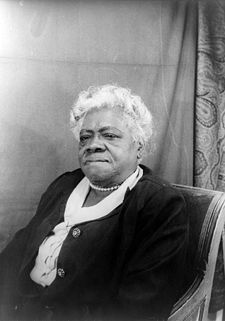
This school was originally opened in 1889, and named for U.S. Grant. This building stood at 1146 Girard Avenue North. In 1968 the school was renamed for Mary McLeod Bethune, Black teacher (born 1875). The new Bethune School, built in 1968, opened at 919 Emerson Avenue North on January 27, 1969.
Built and opened in 1893, and named for James G. Blaine, American politician born 1830. The school was closed in 1968.
Opened in 1991. Closed in 2002 when the program moved into the Pillsbury school. Named for Pierre Bottineau, early pioneer of St. Anthony (born 1817).
The school was built and opened in 1887. Additions were made in 1897, 1910 and 1916. Closed in 1979. From 1917 to 1922 Bremer served as both an elementary school and a junior high. Named for Fredrika Bremer, a Swedish novelist born in 1801.
Opened in 1998.
Opened in 1998, and closed in 2002.
The original Bryant school was District #117, built in 1885 by Minneapolis Township. The school was made of 3 rooms in 2 wooden buildings on the south side of 38th Street at 4th Avenue South. Bryant was absorbed into the city school system in May 1887, when the neighborhood was annexed. In 1898 a new Bryant school was built at 3707 3rd Avenue South. Additions were included in 1903 and 1910. In 1927, this school was renamed Warrington, in honor of Bryant's first principal, Alice Warrington. The third Bryant school, Bryant Junior High, was built in 1923. The school, at 3737 3rd Avenue South, closed in 1978. All three Bryant schools bore the name of William Cullen Bryant, American writer, born 1794.
Bryn Mawr opened in 1895 in a rented building at Logan Avenue and Elm (now Morgan). The site is now in Bryn Mawr Meadows, just south of where Morgan and Laurel Avenues meet. This school closed in 1902 for two years. From September 1904 to October 1907, Bryn Mawr school resumed classes in the rented building. A new brick schoolhouse was built and opened in 1908, and added to in 1923. Two portables also held classes for some years. Bryn Mawr closed in 1975.
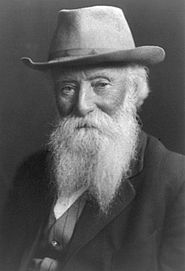
A 6-room portable was set up on this site in 1921. A brick schoolhouse was built in 1926. An addition was built along 50th Street in 1962. A new schoolhouse was built on the site in 2002-2003. During construction, the children were sent to Brookside school in St. Louis Park. The new building sits at 1601 West 50th Street (at James Avenue). Burroughs is named for naturalist John Burroughs, born 1837.
Built in 1887, and named for John C. Calhoun, an American politician born 1772. Calhoun was added to in 1904 and 1920. The school was demolished on Sept. 19, 1975. The site is now occupied by the parking garage in back of Calhoun Square.
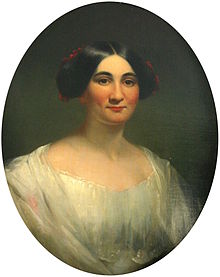
Cary was a 2-room portable built in 1924. Classes began in January 1925. The school closed in 1942. Alice Cary was a poet, born in 1820.
A 4-room portable, Cavell opened in 1923. It served until 1950, and grew to 6 rooms. Edith Cavell, born in 1865, was an English nurse. While serving in Belgium, she was executed by the German Army of Occupation.
The school was built in 1877-1878. It served as the only city high school for years. Old Central closed in 1913, when the new Central High opened on 34th Street. However, during its first year of retirement, the old high school housed the pupils of North High while the new North was under construction; Girls Vocational High; and William Hood Dunwoody Institute (which later moved to its present site on Wayzata Boulevard). Later, this site became home to the city's Vocational school.
The most recent Central High, at 3416 4th Avenue South, was built and opened in 1913. An addition was completed in 1922. The school closed in 1982. Richard Green School occupies the site now.
Built in 1856-1858, classes began in this school in June 1858 under George B. Stone, principal. The Union School burned, with all the records of the School Board, in 1864. A new school opened on this site in 1866. Two years later the building was renamed Washington School.
Opened in 1990 at 2205 Girard Avenue North as a Pre-school and 1st grade. Moved to 23rd Avenue in 1992.
An experimental school, with classes at sites throughout the neighborhood. Chiron opened in 1989 for grades 5 and 6. In 1990 grade 7 was added. In Greek mythology, the centaur Chiron was highly regarded as a teacher.
The school was held in the 1st Universalist Church. High school students attended classes here from 1873 until 1878, while the new all-city High School was under construction.
Built in 1882, with additions in 1904 and 1910. Opened November 1882. Clay closed in 1965, and the University of Minnesota bought the school for $120,000. Named for Henry Clay, politician, born 1777.
A portable opened here in 1916. The brick schoolhouse was built in 1927 and closed in 1982. Named for Grover Cleveland, president, born 1837.
Built in 1889, an addition built in 1920/21. School closed in 1975. Clinton was probably named from Clinton Avenue, which was named for Clinton Morrison (born 1842), local worthy. Morrison took his name from the Clintons, a prominent family in New York state.
Columbus opened in 1907 at Winter and Hoover Streets in Northeast. This site closed in 1927, when a 2-room portable was built at 2540 Talmadge Avenue Southeast. This second Columbus school closed in 1931. Named for Christopher Columbus, explorer.
Built in 1923, added to in 1958, closed in 2005. Named for novelist James Fenimore Cooper (born 1789).

Wooden annexes from Garfield and Irving schools served as classrooms while Corcoran was under construction, in 1888-1889. The school closed in 1975, and a park was built on the site. Named for William Wilson Corcoran (born 1789), a merchant who founded the Corcoran Gallery in Washington, D.C.
From 1873 to 1878, while the Board of Education was raising funds for, then building, a high school for the west side of the river, students of high school age had two choices. They could attend classes in the Church School, or in a make-shift school in the basement of a building on the Curtis block (in the business district). Both temporary schools closed when the High School opened in 1878.
- Deaf School, ???
In response to a large number of petitions, the School Board opened in 1895 a school for deaf children. Reluctantly, the Board closed the school in 1897. 25 students attended the school in its first year, 22 during its 2nd year.

The 1st Douglas school was built in 1880 by Minneapolis Township, as District #119. The city Board of Education took over the school when the City expanded in May 1883. In 1894 this first building was moved to the other side of Lake of the Isles, and opened as Kenwood School. A second Douglas school opened on the old site in November 1894. The school closed in 1974. In mid-twentieth century, the school's third floor housed an elementary school exhibit. Douglas was named for Stephen Douglas, Senator from Illinois, born 1813.
The school opened in the spring of 1920 at 1805 Dupont Avenue North. In 1924, a new school was built at 3900 West River Road. William H. Eustis donated the 21-acre site. Dowling was built as a school for crippled and retarded children. Two additions have been built, in 1936 and 1961. Named for Michael J. Dowling, a Minnesota banker, who was crippled due to exposure during the blizzard of 1880. Born 1866.
Opened in 1992, in Central Lutheran Church. Re-named Martin Luther King in 1993.
Opened 1991 at 730 2nd Avenue South, and moved to 706 2nd Avenue South the next year.
Built on the site of Winthrop school, East was built in 1899 for $90,000. Closed in 1924, East was from that year site of the East Division of Vocational High School.
A 2-room portable built in 1927 and closed in 1929.
Edison was built in 1922 as Northeast Junior and Senior High. The school was given Edison's name in 1923. From 1958 it served as a high school only. The addition dates from 1966. Named for inventor Thomas Edison, born 1847.
Opened in 1998.
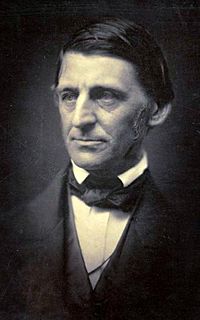
The first schoolhouse built here opened in 1885. An addition was built in 1899. This schoolhouse was replaced in 1925 by a school added to in 1926, and closed in 1972. Emerson School for Special Education opened in 1973.
Ericsson opened in 1912 as 4 portables, located at 45th Street and 31st Avenue South. The brick schoolhouse opened in 1916 at 4315 31st Avenue South. This building closed for rehabilitation from 1979 to 1981, and students and teachers went to Bancroft, Standish and Northrop. Northrop and Ericsson merged in 2005, and the Ericsson schoolhouse took Northrop's name from that date. The addition dates from 1951. Named for John Ericsson (born 1803), who designed the U.S.S. Monitor, the U.S. Navy's first iron sailing ship.
Everett, built in 1871, replaced St. Anthony's Second Ward School, built here in 1851. Named on April 20, 1878, for Edward Everett, president of Harvard and politician (born 1794). This building burned down on February 27, 1887, and a replacement was built the same year. Everett closed in 1932.
In 1898 the Minneapolis Board of Education annexed Independent School District #132, which until that date had been associated with Richfield (though a part of Minneapolis since 1887). Annexation of District #132 brought 2 schools into Minneapolis: Margaret Fuller and Eugene Field. The original Field school at Portland and East 48th Street closed in 1909, but re-opened in September 1910. The old building was replaced in 1921 by a schoohouse at 4645 4th Avenue South. Additions were built in 1923 and 1961, and later a 4-room portable was added. Named for Eugene Field, a humorist and poet, born 1850.
Built in 1867. Replaced by Humboldt school.
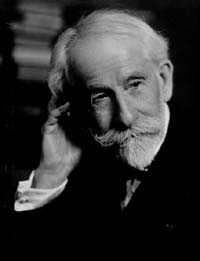
Built in 1931 and named for William Watts Folwell, 1st President of the University of Minnesota (born 1833). The addition was built in 1937.
Built in 1872 by the East Division (St. Anthony) Board of Education. Building later called Marcy and Trudeau schools.
Called Mount Sinai until 1992, the school continued to offer a French and American Indian concentration.
Built in 1869 at the northwest corner of Washington and 14th Avenues North, the school burned down in early 1873. The land was sold off, and a new school built on land bought in May 1873. The school opened that fall at 400 15th Avenue North. This building, too, burned down on March 5, 1916. Most of the children were sent to Blaine school while a replacement school was built. Franklin was rebuilt as a Junior High in 1917. Both Franklin schools were named after Ben Franklin, patriot, born 1706.
Franklin Jr. High replaced an elementary school that was destroyed by fire. Built in 1917, and added to in 1924, Franklin closed in 1971 after completion of new Franklin, at 1501 Aldrich Avenue North. This Franklin school closed in 2005.
Built in 1896 by Independent School District #132 and annexed into the City School system in 1898. Additions were built in 1909 and 1915. Fuller closed in 1974. Named for Margaret Fuller, a writer born in 1810.
Opened on Oct. 30, 1911, as 5 portables at 49th Street and Vincent Avenue South. Named in 1912 for Robert Fulton, inventor of the steamboat, born 1765. The brick schoolhouse was built in 1915, with additions in 1922 and 1966. In 2000 Fulton was renamed Lake Harriet Upper School.
Built in 1882, with an addition dating from 1899. Garfield School closed in 1942. Named for James A. Garfield, president, born 1831.
Opened in 1894, the school served 9 children that year. Closed in 1895. In 1904-1905, in Glencar Addition, a church was renovated to handle overflow from Tuttle School.
Glen Lake Farm School was a detention school for Hennepin County boys. The boys were assigned to Glen Lake by Hennepin County Juvenile Court. Opened in 1918 and closed in 1925.
Built in 1889, with additions in 1908 and 1914. Grant was renamed Bethune in 1968, and closed when the new Bethune opened. Named for Ulysses S. Grant, general and president, born 1822.
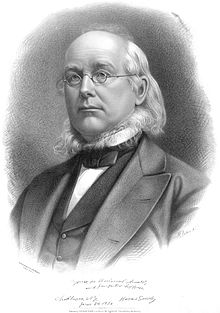
Built in 1888, and opened in November of that year. An addition was built in 1912. Closed in 1975 and replaced by the Andersen complex. Named for Horace Greeley, editor of the New York Tribune, born 1811.
Opened in 1993 on the site of Central High School. Named for Richard Green, Superintendant of Minneapolis Schools from 1980 to 1988.
A portable built in 1926 at 3483 North 2nd Street. Replaced in 1927 by a 4-room portable at 508 36th Avenue NE. Named for one of the first American soldiers killed in World War One, James B. Gresham (born 1893). The school closed in 1942.
Hale opened in a portable built in 1926 at 12th Avenue South and 51st Street. The brick schoolhouse on 54th Street was built and opened in 1930. An addition and 2 portables were added to the site in 1938. Named for Nathan Hale, patriot, born 1755.
Built in 1960, the addition was built in 1963. The school closed in 1985. Hall re-opened in 1986 as Hall Montessori. Named for Elizabeth L. Hall, Assistant Superintendant of Elementary Education in the Minneapolis Public Schools, 1911-1934. She was born in 1867.
Hamilton school opened in September 1886, in Shingle Creek. It became School Board property in spring of 1887, when Minneapolis annexed the neighborhood. The new schoolhouse, built in 1889, opened for classes on December 1 of that year. (additions built in 1899, 1908, 1911 and 1925). Hamilton was closed in 1967, when a new school by that name opened, at 4118 Emerson Avenue North. The new school closed in 1982. Named for patriot and Secretary of the Treasury Alexander Hamilton (born 1757).
Minneapolis Township bought the land on Glenwood Avenue in May 1872. Hennepin County District School #89 was built on the land in 1872 as a 1-room schoolhouse. The second Harrison school, at 1500 North 4th Avenue (at James), was built in 1884. Children began attending classes there in October 1884. Additions were built in 1897, 1913 and 1960. Named for William Henry Harrison, 9th President (born 1770).

Built in 1883, with additions in 1903 and 1912. Closed in 1975. In 1975-1976 Hawthorne served as the Primary wing of North Star school. Hawthorne was destroyed in 1976. Named for Nathaniel Hawthorne, born 1804, American writer.
Built in 1905. An addition was built in 1925. The school closed in 1974. Named for American diplomat John Hay (born 1839).
A school for juvenile delinquents, used by the City school system from 1966.
Opened in 1973, and moved in 1976 to the same building in Minnetonka that housed the County Home School (14300 County Road 67).
Built and opened in 1927 as a junior high, additions in 1928, 1929, 1939, 1956. From 1939 the building included a Senior High. Named for Patrick Henry, patriot, born 1736.
Opened in 1910, when the 2-room annex from Garfield school was moved to Minnehaha Avenue and East 45th Street. By the time the school closed, the site hosted 4 portables. A brick schoolhouse was built in 1916, to which an addition was added in 1923. Named for the hero of Longfellow's poem of the same name.
The city High School was originally part of the Central Union School (along with the Grammar School) at 3rd Avenue between 4th and 5th Street. When the Union School burned down in 1864, high school classes were held in a leased site at 2nd Avenue South and Washington. In 1866 high school classes moved back to the new schoolhouse at the old location. In 1873 a new separate high school building was first proposed, but the voters declined to pay for it 2 years later. Meanwhile, the high school moved out of what was by then Washington grammar school. High school students went to Church School or to the high school on the Curtis Block. Once the new High School was finished (at 4th Avenue South and 11th Avenue), these two temporary schools closed and all high school students were sent to the new building. This schoolhouse later became the Vocational school.
Starting in September 1885, several grammar schools accepted high school age students to take the pressure off Central High. The city was divided, in 1889, as follows: East Side 9th, 10th & 11th graders went to Winthrop; Adams school took in 9th through 11th graders living east of 10th Avenue South to 18th Street, and east of Chicago Avenue south of 18th Street; North High took in those living north of 6th Avenue North; and Central took the rest of the 9th through 11th graders. Until 1890, only Central took in 12th graders. Holmes replaced Winthrop as the East Side High in 1890. In July 1890 the School Board authorized letting North Siders attend their 4th year of high school at North High instead of going to Central. The results of this change impressed everyone, and in May 1891, the East Side and South Side high schools were also expanded to 4 years.
Built in 1886; additions were built in 1905 and 1916. Old Holland was demolished in 1968, and a new schoolhouse, built in 1968, opened in February 1969 at 1534 NE 6th Street. Holland closed in 2005. Named for Josiah G. Holland, author under the pen name of Timothy Titcomb (born 1819).
Built in 1890 and closed in 1968. This 2-storey, 22-room school replaced Winthrop as the high school for the East Side until 1900. In those years Holmes took in 5th grade through 12th grade. After 1900 Holmes was a grammar school only. From 1965 to 1978 Holmes only offered classes for the hearing-impaired and for "slow learners". In 1978-1979 Holmes was combined with Marcy as Holmes/Marcy (Marcy school in the Holmes building), then Holmes from 1979 (at Holmes). The school closed permanently in January 1982. Named for Oliver Wendell Holmes, writer, born 1809.
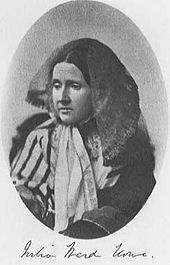
Opened in 1916 as a portable, at 41st Avenue South and 36th Street. Another portable was added in 1920. By 1927 Howe had grown to include 6 rooms at the site. A brick schoolhouse built in 1927 replaced these portables. Howe school was closed n 2005. Named for Julia Ward Howe, author of "The Battle Hymn of the Republic" (born 1819).
First Ward School was built here in 1867. In 1878 a new school was built here and named for Alexander von Humboldt, German naturalist (born 1769). Four rooms were added in 1885. Humboldt closed in 1908.
Opened in 1998 for grades 3 to 8 at 1130 Nicollet Mall (in the YWCA) and at Whittier School. The school moved to the above address in 1999.
This site was the property of Hennepin County School District #9, which built a schoolhouse here in 1881. The school became part of the Minneapolis system in April 1883, then burned down in November. Minneapolis built a replacement school here in 1884. Additions were built in 1899, 1909-1910 and 1910-1911. The school closed in 1976. Named for Washington Irving, writer, born 1783.
The school opened in 1911 in the Nicollet school building. Island school moved in November 1912 to the old Marcy school and was renamed Thomas Arnold School, "a disciplinary and opportunity school".
Built in 1867-1868, enlarged in 1871. On June 12, 1868, the school was named for General Andrew Jackson, born 1767. In May 1890 this school was removed and building commenced on a new Jackson school. The second Jackson school, at 1427 4th Street South, opened in September 1890 and closed in 1942.
The first Jefferson school was built at Hennepin & 10th in 1868 and destroyed by fire on December 12, 1876. This building is also called 2nd Ward School on a few old maps. The School Board sold the site after the fire. The second Jefferson School, at 1st Avenue North and 7th Street, was built on land bought in February 1877. The school opened in September 1877, and closed in June 1910.
Built and opened in 1924, and named for Thomas Jefferson, patriot, born 1743. Since 1977, Jefferson has served as an elementary school.
Built in 1910 and opened in September of that year. An addition was built in 1915. The school closed in 1942. Named for John Johnson, Governor of Minnesota (born 1861).
A 1-room portable that opened at Lake Street and 43rd Avenue South in 1919/1920. In 1921/1922, the annex operated as a 2-room portable at its new location, 2801 40th Avenue South.
Built in 1922. Closed as a junior high in spring 1979, Jordan re-opened in the fall as an elementary school. Named for Charles Morison Jordan, Superintendant of Schools in Minneapolis from 1892 to 1914 (born 1851).
The former junior high school functioned as North Area Fundamentals K-8 from 1979 to 1982, when it closed.
Opened in 1992 at the Lehman Building on Colfax and Lake Street; closed in 1996.
Built in 1928. The name means "northwest wind", and is taken from Longfellow's poem "The Song of Hiawatha".
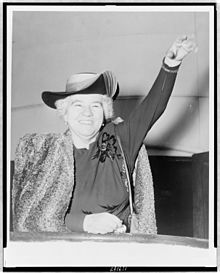
Built 1954, with an addition built in 1957. Named for Sister Elizabeth Kenny, an Australian nurse who developed a technique for treating polio.
The school opened in November 1888, on Kenwood Parkway and 21st Street. This school, a single rented room, was replaced in 1894, when Douglas school was moved to the site. This school was destroyed in 1908. A new school was built on the same site, and opened in September 1908. A 4-room schoolhouse originally, additions were built in 1923 and 1966. Kindergarten was introduced in Kenwood school in September 1897.
Named for Rev. Martin Luther King, Jr., born 1929. Called Downtown Central until 1993.
Built in 1907 on the site of Laurel Avenue School, and closed in 1958. Lafayett re-opened in 1959 for one more year. Named for Marquis de Lafayette, hero of the American Revolution and of the French revolutions of 1789 and 1830 (born 1757).
Open for 1 school year only, 1959-1960.
Opened as a 2-room school in November 1888, in a rented building on 43rd Street near Richfield Road. The school was closed in 1893, and re-opened in 1894. A 4-room, wood frame schoolhouse replaced the rented building in 1898. A 4-room brick schoolhouse was finally built in 1906, with additions in 1908 and 1911. The school was closed in 1979, and the land was sold.
- Laney, 2620 Russell Avenue North
-
Opened in 1995 as a K-5. Named for Lucy Craft Laney (born 1854), a black teacher who founded her own school, and taught Mary McLeod Bethune.
- Laurel, 1800 Laurel Avenue (at Lyndale)
Opened in 1897 in a rented property. The School Board bought the land in 1906 for $15,000, built a new schoolhouse on the site and named the school Lafayette in 1907.
Built in 1867, and enlarged in 1871 and 1883. Named on June 12, 1868 for President Abraham Lincoln (born 1809). Kindergarten was introduced in September 1897. This schoolhouse closed in 1903. In 1905 a new schoolhouse was built at Penn & 10th Avenues North. The new school opened in January 1906. Lincoln closed in 1923.
Built in 1923. In 1974 the school was recast as Lincoln Intermediate, for grades 4 to 6. Lincoln was closed in 2007.
Opened in 1968, to provide industrial arts training and guidance counselling. Moved in 1969 to 1225 Plymouth Avenue North.
Lind first opened as a portable in 1921, at Camden and 52nd Avenue North. A 4-room portable was added in 1925, and a 2-room portable added in 1927. In 1937 a brick schoolhouse replaced the portables. Additions were built in 1950 and 1954. For the new brick schoolhouse, 2 city blocks were used. Lind was built where Colfax once ran north from 50th Avenue. The school playground occupied the 2 blocks across 50th from Lind, Dupont to Bryant. Lind closed in 1982. Named for Jenny Lind, "the Swedish Nightingale", a famed soprano born in 1820.
Built in 1888, with additions dating from 1912, 1914, 1918 and 1926. When old North Side High moved to its new building in 1896, the former high school was renamed Logan and used as a grammar school. Logan closed in the summer of 1942. Named for John A. Logan, founder of the Grand Army of the Republic and Senator from Illinois, born 1826.
The first school of this name was a 2-story, 4-room brick schoolhouse, built by Minneapolis Township in 1876. The schoolhouse at Minnehaha & Lake (north side of Lake, west of 27th Avenue) was designated District #108. District #108 became Board of Education property when the City annexed the neighborhood in April 1883. The old building was joined by a second school built on the same site in 1886 (plus 3 extra lots purchased that year). All told, 16 rooms in 2 buildings occupied the site until 1919. Kindergarten was introduced here in September 1897. The current Longfellow school was built at 3017 East 31st Street in 1918. The school closed for a few years in 1978, but re-opened in 1986 as Longfellow International/Fine Arts Elementary Center, a K-4. Longfellow International closed in 2010. Named for Henry Wadsworth Longfellow, American poet born 1807.
Opened in 1924 as a 4-room portable on Thomas & 44th Avenue North. Additions in 1925 and 1926 expanded this temporary school to 8 rooms. During 1928 a brick schoolhouse was built on this site, and classes were held at Henry Jr. High until January 28, 1929. The new school opened the same day. Loring closed from fall 1977 to spring 1979, and classes were held at Penn School during those 2 years. In 1979 Loring re-opened for grades K-3. Named for Charles M. Loring, "Father of the Minneapolis Parks", born 1833.
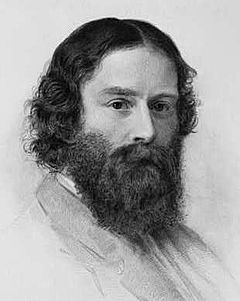
The first Lowell school opened in October 1884, in Forest Heights, for one school year. The school closed for the next year while the new schoolhouse was built. Old Lowell school opened in October 1886 (along Logan Avenue, from Hillsdale to Willow), and was destroyed by fire in 1893. The new school, built in 1893 (at 1900 Willow Avenue North) was ready for the children in October. Lowell expanded in 1912 and closed in 1975. In 1975-1976 Lowell served as the Intermediate level of North Star school. Named for James Russell Lowell, poet and diplomat, born 1819.
Lowry school opened on October 30, 1911, as 4 portables at 29th & Lincoln NE. The school was named in 1912 for Thomas Lowry, the builder of the street car system in Minneapolis and St. Paul (born 1843). The brick schoolhouse was built 1915 at 2840 Lincoln NE, and closed in 1978.
Built in 1921 as a hospital school, operated by the Minneapolis Board of Public Welfare, for children with tuberculosis. Named after Lymanhurst Hospital, at 1800 Chicago, an annex to the City Hospital from around 1913. The school closed in 1934.
On land purchased by Hennepin County District #5 in 1882, Minneapolis Township let a contract for a new school. After the land became city property in 1883, the City's School Board built the schoolhouse. Lyndale opened in 1883; additions were built in 1899, 1915 and 1927. In 1968, a new Lyndale School was built at 3333 Grand Avenue. Both buildings operated from 1968 to 1972. The new school held grades K-2, and the old building taught grades 2 to 6. The old site was taken over by the Park Board, and the schoolhouse was torn down. Painter Park occupies the block now.
Built in 1870, wings were added to the school in 1874 and 1880. In 1887 another new wing was added. In 1889 the 6 rooms built before 1887 were torn down and 12 rooms added. Thus, Madison as it stands in 2011 was built in 1887 and 1889. Closed in 1977, and the property sold. Named for James Madison, born 1751, patriot and President.
Built in 1886, with additions built in 1905, 1916 and 1966. Mann was closed from 1942 to 1945, and closed permanently in 1974. The old schoolhouse was torn down and Wilder School built on the site. Named for Horace Mann, American educational reformer, born 1796.

Old Marcy was built in 1872 at 9th Avenue SE and 4th Street. Wings were added in 1882 and 1883. Originally called Fourth Ward School, and re-named Marcy on April 20, 1878, for William L. Marcy, U.S. Secretary of State (born 1786). In 1900 Marcy closed, as Holmes was able to absorb many more pre-high school students once the high school left. But in 1901 four of Marcy's rooms opened again for classes, and in 1902 the whole school was in use again as a grammar school. This building closed in 1908, but in 1912 became Thomas Arnold school. New Marcy was built in 1908 at 711 11th Avenue SE, and opened on November 9 of that year. Closed in 1978, Marcy opened in the Holmes schoolhouse in 1978, first as Holmes/Marcy for a year, then as Marcy K-6. This school closed in January 1982, when Marcy combined with Tuttle (in Tuttle schoolhouse) as Tuttle-Marcy. In 1989, Tuttle-Marcy closed, but Marcy School opened in Tuttle schoolhouse (-1992). A new Marcy school was built in 1992, at 415 SE 4th Avenue.
Built in 1924 and named for Chief Justice John Marshall (born 1755). On February 10, 1968, a merger was approved with the University of Minnesota's High School. From September 1968 Marshall-University Jr. & Sr. High became the name of the school. Junior High classes were dropped in 1972. The school closed in 1982, and the building is now an office complex.
Built in 1902 and opened in January 1903; additions were built in 1911 and 1918. Closed in 1977. Named for William McKinley, born 1843, president.

Opened for classes in 1869, and closed in 1873. Named for R.J. Mendenhall, who was Secretary and Treasurer of the Board of Education from 1868 to 1875.
Opened in 1990 as a K-2. It was the first school run by an education corporation in the city of Minneapolis.
Built in 1932, additions were built in 1940 and 1956. The name was changed to MAVTI in 1973. Named for Mary E. Miller, one of the first schoolteachers in Minneapolis.
Miller High with a new name. Evening classes were added in 1972.
Opened in 1980. Now part of MCTC.
In the 1870s Minneapolis Township operated a 1-room wooden schoolhouse at the northwest corner of Minnehaha Avenue and 46th Street. This school, Hennepin County District #110, was absorbed into the City's school system after the neighborhood was annexed in the spring of 1887. In 1896 the old building was moved to the grounds of Irving School and used as an annex. A new Minnehaha school, meanwhile, was built in 1889 at 3801 East 51st Street. In 1920/1921 a newer school was built, at 36th Avenue South and 51st Street. From 1922 the old building on 38th Avenue was used as an annex. A newer Minnehaha was built at 5141 40th Avenue South in 1928. This latest school closed in 1978. All the Minnehaha schools were named to honor Longfellow's poem and the creek that runs nearby.
Built in 1878, additions built in 1889, 1903 and 1920. Old Bancroft school was moved here to serve as an annex around 1903. Monroe closed in 1966. Named for James Monroe, 5th President, born 1758.
Built in 1922 by the Richfield School District. Additions were built in 1923, and an annex was added, too. The school was absorbed into the City's system when Minneapolis annexed the neighborhood in 1927. In 1939 and 1940 a new schoolhouse was built on this block, at 3810 East 56th Street. The addition was built in 1953.
In 1885 a school was built at Beacon & Oak SE, and named for John L. Motley, American historian, born 1814. In 1924, a replacement was built at 915 Dartmouth SE (at Ontario). This school closed in 1942, and re-opened in 1952. In 1969 a program was added for training the mentally retarded. Motley closed its doors in 1973, but reopened in combination with Pratt School for the 1973/1974 school year (as Pratt/Motley Continuous Progress Elementary). Motley was the Intermediate school and Pratt the Primary. Motley again closed its doors, but opened in the fall of 1974 as the home of the South East Free School (-1982).
Opened in 1991 with a French and American Indian focus. Re-named Four Winds in 1992.
Built in 1900, Nicollet School was a 4-room frame building. Nicollet was not open in 1913-1914, and was closed for good in 1918.
This schoolhouse, built in 1920/21 as Minnehaha Elementary, became Nokomis Junior High in fall 1929. Additions were built in 1923, 1929 and 1957. Closed in 1978. Named for Nokomis, grandmother of Hiawatha, as one of the schools commemorating Longfellow and "The Song of Hiawatha".
Built in 1924 by the Richfield School District. Operated by Minneapolis after annexation of the neighborhood in 1927. The school was re-named Wenonah in 1930.
Formerly Lincoln Learning Center. The name was changed in 1974.
North Side High was built in 1888 at Emerson and 18th Avenues North. Classes began there in January 1889. This school was replaced in 1896 by North Senior High, at 1719 Fremont Avenue North. The former high school, meanwhile, was renamed Logan School, and stayed open for another quarter century. In 1913 North High was demolished and a new school was begun. The students were sent to newly-closed Central High (on 11th Street & 4th Avenue South) for a year. The new North High School opened in 1914, at 1719 Fremont Avenue North. Additions were built in 1921, 1923 and 1939. North Community High, built in 1973/1974 at 1500 James Avenue North, replaced this building. The building nearly closed in 2011, but was saved, we hope, thanks to community action.
The first school by this name was built at 2017 Monroe Street in 1922 as a junior and senior high school. In 1923 its name was changed to Edison.
In 1956 a new junior high opened at 2955 NE Hayes Street, and was called Northeast Jr. High. Additions were built in 1957 and 1959.
Opened as 4 portables in 1916; the present brick schoolhouse was built in 1923. The addition was built in 1950. The school closed in 1982, and reopened in 1986 as Northrop Montessori. In 2005, Northrop and Ericsson schools merged. Northrop schoolhouse was closed, and Ericsson adopted the name. Named for Cyrus Northrop, 2nd President of the University of Minnesota, born 1834.
Started in 1975. Originally 2 schools, both ungraded. A primary, at 2410 Girard, and an intermediate, at 2400 Girard.
Opened in 1992 as a K-3.
Built in 1962 and named for Floyd B. Olson, Governor of Minnesota (born 1891). Closed 1982 as a junior high, and re-opened in the fall of that year as an elementary school.
Open for classes on March 4, 1912. Open Air was a program that catered to the needs of stammerers and stutterers. In 1912/1913 classes were held at Bancroft and Bremer Schools; at Bancroft and Peabody Schools in 1913/1914. Open Air Special classes were held in 1912/1913 at: Clay for special instruction, Greeley and Hawthorne for stammerers. In 1913/14 Special classes were held at Greeley for stammerers, and at Peabody, Holmes, Lafayette and Washington for "special instructions".
Page School began as a 10-room portable at 52nd Street and 3rd Avenue South. Built in 1925, the portable was replaced by a schoolhouse at 324 Luverne Avenue in 1958. The school closed in 1982. Named for Walter Hines Page, born 1855, American editor and diplomat.
Opened in 1995 as a K-6. Closed in 2005, and the program was transferred to Bryn Mawr school.
Built in 1887 and closed in 1929. Named for George Peabody, American banker and philanthropist, born 1795.
This 12-room school was built and opened in 1907. An addition was built in 1914. Penn school shared space with Loring 1977-1978, and closed in 1979 when Loring moved back to its own building. Named for William Penn, born 1644, the founder of Pennsylvania.
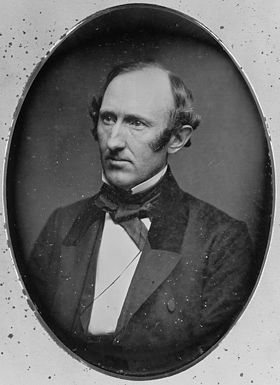
Built in 1926; addition built in 1930. Closed in 1982. Named for abolitionist Wendell Phillips, born 1811.
Pierce School first opened in 1896, when the Board of Education bought land on Fillmore between Spring and Summer Streets. The site included a church, which was turned into a 4-room schoolhouse in time for school in September. In 1900, the school moved north to 1145 Broadway (at Fillmore). Five portables were moved there, too. Closed in 1966. Named for Franklin Pierce, 14th President, born 1804.
Built in 1907, additions were built in 1908, 1912 and 1923. Closed in 1982. Named for John S. Pillsbury, Governor of Minnesota, born in 1827.
Built in 1927 as a 4-room portable. Closed in 1942. Named for Portland Avenue.
In 1997 Wilder K-6 was re-named Powderhorn Community School.
Built in 1898, additions built in 1906, 1919 and 1926. Pratt served as an ungraded primary school 1972-1973. In 1973 Pratt became the Primary wing of Pratt-Motley Continuous Progress Elementary, with Motley as the Intermediate school. Motley closed in 1974, and both Primary and Intermediate continued in Pratt school as Pratt Continuous Progress Elementary. Pratt closed its doors to students in 1982. Named for Sidney Pratt, born 1875, who was the first soldier from Minneapolis to die in the Philippines.
Built in 1884, additions built in 1887, 1893, 1901, 1909 and 1931. Named for William Prescott, American historian, born 1796. Closed in 1974.
Opened in 1988.
Built in 1966 to replace Whitney School, which burned down in 1962. Closed in 2005. Named for Rufus A. Putnam, Superintendant of the Minneapolis Public Schools from 1950 to 1967 (born 1907).
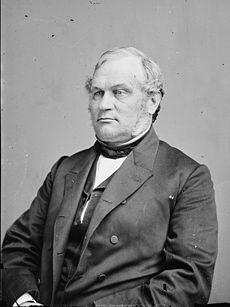
Built in 1931, closed 1982 to 1987. Re-opened in 1987 as Ramsey Jr. High Alternative School. Named for Alexander Ramsey, Governor of Minnesota (born 1815).
Reed school was a 2-room portable, built in 1933, and was open for only one school year. Closed in 1934. Named for Walter Reed, who discovered how yellow fever spread (born 1851).
A 4-room portable, scheduled to open its doors in January 1925. This school lasted 1 semester only. In fall 1925 it had closed its doors forever. Named for Paul Revere, patriot, born 1735.
Built in 1920, additions built in 1923 and 1925. This school was in Richfield until the 1927 annexation. The school was re-named Windom in 1930, for William Windom, Minnesota senator and U.S. Secretary of the Treasury (born 1827).
Built in 1925 by the Richfield School District, as a portable. Closed in 1942. Named for James Whitcomb Riley, American poet, born 1853.
Two schools opened in 1995 at this address: Riverview West Early Childhood Special Education school, and Riverview Day Treatment Program.
Built in 1922. Additions were built in 1958 and 1966. Until the end of the 1930/1931 school year, Roosevet served both Jr. and Sr. High students. Named for President Teddy Roosevelt, born 1858.
The land was purchased in 1895, and a 2-storey 4-room frame schoolhouse was built here. In 1906 an 8-room brick schoolhouse was built to replace the wooden one, which was destroyed by fire. Additions were built in 1907 and 1911. The school closed in 1942.
This 4-room portable is the former Sanford portable on the same site. It was renamed in 1927 when Sanford Junior High opened. The school closed in January 1942. Named for Betsy Ross, patriot, born 1752.
The first Sanford school was an 8-room portable located at 29th Avenue North and 6th Street from 1916 to 1922. The second Sanford portable had 4 rooms, and was located at 300 31st Avenue North from 1922 to 1927. Built in 1916, this Sanford was re-modeled in 1922. After the new Maria Sanford Junior High School opened, the portable was renamed for Betsy Ross. Named for Maria Sanford, born 1836, a renowned professor at the University of Minnesota.
Built in 1926. The addition dates from 1960. The site also included 3 portables. Named for Maria Sanford, born 1836, a renowned professor at the University of Minnesota.
Built in 1890. Additions were built in 1909 and 1916, and 2 1-room portables were added in 1928. Closed in 1974. Named for Friedrich von Schiller, German poet (born 1759).
- Second Ward School, St. Anthony, south side of University Avenue Northeast, between 6th and 7th Avenues
Built in 1851. The schoolhouse was sold in 1871 for $200, and Everett school was built on the site.
Built in 1887; additions built in 1901, 1910 and 1916. Seward opened as an elementary school, but functioned as a junior high from 1924 to 1926, with lower grades, too. This building was demolished in 1966 and a new one built at 2309 28th Avenue South. Named for William Henry Seward, politician, born 1801.
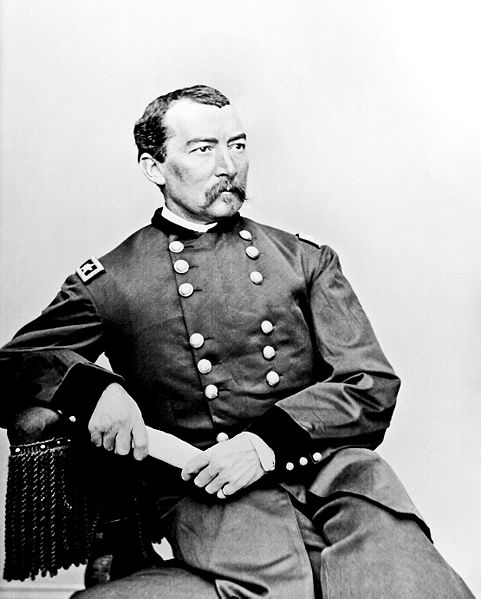
Old Sheridan was built in 1896 and opened in January 1897. This schoolhouse was demolished in 1932. The new school opened in 1932 at 1201 University Avenue NE, and was added to in 1967. Sheridan served both elementary and junior high students until 1974, when the elementary closed. The junior high closed in 1978. When Sheridan opened in 1896, kindergarten was offered there in response to community interest. This new program proved so successful that Kenwood, Lincoln and Longfellow adopted kindergarten in September 1897. Named for Philip Henry Sheridan, born 1831, Union Army general.
Built in 1958; addition built in 1959. Closed in 1982.
Built in 1927 as a 2-room portable. Closed in 1928. Named for Henry Sibley, Minnesota pioneer, born 1811.
Built in 1905 on the site of old Bancroft school, with additions that were built in 1907, 1911 and 1914. The school opened in January 1906 and closed in 1942. Named for Henry M. Simmons, a local Unitarian minister (born 1841). This building now serves as an apartment house.
Built in 1892, and opened in January 1893. Additions were built in 1910, 1916, 1926 and 1939. Closed in the summer of 1970, when the new South High was finished.
Built and opened in 1970.
Opened in 1973 at 1209 4th Street SE; moved in 1974 to old Motley school. The Free School closed in 1982, and was a K-12.
Built in 1940; the additions date from 1942 and 1956. Southwest was originally a 4-year high school; grades 7 & 8 were added in 1959. In 1968 a new wing was added for the junior high. The School Board dubbed the complex Southwest Secondary School on February 4, 1975, and this new name has functioned from fall 1975.
- Southwest High, 3510 West 47th Street, 1940-1975
- Southwest Jr. High built next door, 3414 West 47th Street, 1968-1975
- Southwest Secondary School, 7-12, 3414 West 47th Street, 1975-1982
- Southwest, 9-12, 1982-1988
- Southwest Secondary, 9-12, 1988-the present
A portable opened on this corner in 1916. The brick schoolhouse was built in 1920-1921 (addition 1923), and closed in 1982. Named for Miles Standish, Massachusetts pioneer (born 1584?) and hero of a poem by Longfellow. A housing development now occupies this site.
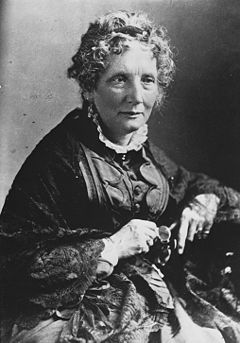
A 2-room portable opened in 1922, and expanded to 4 rooms in 1923. Closed in 1942. Named for Harriet Beecher Stowe, (born 1811), author of Uncle Tom's Cabin.
Opened in 1990 as a K-7. Named for Anne Sullivan, teacher of Helen Keller (born 1866).
Built in 1876, addition built in 1885. Sumner closed in 1942. Sumner was damaged by fire on March 8, 1905. Named for Senator Charles Sumner of Massachusetts, born 1811.
Also known as Central School. Built in 1867, and re-named Winthrop on April 20, 1878
Built in 1872 as St. Anthony's Fourth Ward School. This schoolhouse was called Marcy from 1878 to 1908 and Thomas Arnold from November 1912 until 1921. Trudeau took in children who were anemic or under-nourished. The school served grades 3 to 8. When Trudeau closed in 1938, the staff was moved to Bancroft School (38th St. and 14th Ave. S.), and "Trudeau Lowered Vitality Classes" were offered at Bancroft until 1948. Named for Edward L. Trudeau, an American physician who was an expert on tuberculosis (born 1848).

In 1883, a wooden, 2-room schoolhouse, was built at Talmadge and 14th Street SE. In 1890 the Board sold the frame school and built an 8-room school on the same site. In 1911 a new Tuttle was built at 1042 18th Avenue SE (at Talmadge) An addition was built in 1926. Tuttle schoolhouse closed in 1979, and Tuttle operated out of Sheridan school until 1981. In fall 1981, Tuttle school reopened as Tuttle-Marcy until 1990 (2 buildings, 1 school). In 1990 Tuttle changed again, to become Tuttle Contemporary School. Tuttle Contemporary closed in 2007. Named for Calvin A. Tuttle, Minnesota pioneer, born 1811.
Built here first in 1856, the original building burned to the ground in 1864. A new schoolhouse was finished in 1866. While the second school was being constructed, classes were held in a leased site at 2nd Avenue South and Washington. Union School was re-named Washington School on June 12, 1868. In the 1890s City Hall was built here.
Built in 1894 and closed in 1942. Named for Charlotte Ouisconsin Van Cleve, an early settler, born 1819.
From 1946 to 1954, a Department of Veterans Vocational Education operated out of the Vocational School. In 1946/1947 Marshall, North, West and Miller all hosted veterans programs.
In 1913 Minneapolis opened a Vocational School for girls in recently vacated old Central High School (4th Avenue South and 11th Street). William Hood Dunwoody Industrial Institute also opened there that year. Vocational training for boys gradually expanded from the programs available in the junior high schools to a full curriculum in 1924. In that year East High was transformed into the boys' vocational school. In 1932, a new vocational school for girls, Miller Vocational, was built at 1101 3rd Avenue South (additions in 1940 and 1956). The new school was named for Mary E. Miller, one of the first schoolteachers in Minneapolis. East Division closed in 1940, and the boys moved into their new school at Grant Street and 4th Avenue South. In 1980, the vocational school moved to Hennepin and 14th Street, and later merged with Minneapolis Community College to form MCTC.
- for girls
- Girls' Vocational High 1913-1920 4th Avenue South & 11th Street
- Vocational High 1920-1927 same address
- Girls' Vocational High 1927-1932 same address
- Miller Vocational High 3rd Avenue South & 11th Street for girls only 1932-1948
- for boys
- East Division, in old East High, Central & University Avenues SE 1924-1927 just for boys
- Boys' Vocational High, in old East High, 1927-1940
- Boys' Vocational High, in old East High 1938-1940
- Boys' Vocational High 4th Avenue South & Grant Street (in Miller Vocational High) 1940-1948
- for both boys and girls
- Vocational High 3rd Avenue South & 11th Street 1948-1973 replaced Miller and Boys'
- Minneapolis Area Vocational-Technical Institute 1101 3rd Avenue South 1973-1980
- Minneapolis Technical Institute 1415 Hennepin South 1980-
Built in 1950. Named for Edward Foote Waite, Judge of District Court 1911-1941, who handled juvenile court assignments for 20 years. Waite also served on the Municipal Court from 1904 to 1911. He was born in 1860.
Built in 1898, this school was called Bryant until 1927. The school closed in 1966. Named for Alice Warrington, born 1863, principal of Bryant Elementary School 1885-1925.
Built in 1925; the addition dates from 1967. Named for Cadwallader C. Washburn, born 1818, founder of the Washburn-Crosby flour mill.
Built in 1866 as the Union School, this building was re-named in 1868. In 1888, this site (east corner of 3rd Avenue South and 4th Street) was sold to the Board of Court House and City Hall Commissioners, and since then has been the site of City Hall. Washington was re-built in 1887 (addition 1926) at 723 South 6th Street. This second school closed in 1965, and continued to serve as a site for School District offices for years. Named for Geeorge Washington, president, (born 1732).
Built in 1880; additions built in 1888 and 1908. The old building was torn down and a new school built in 1974 at 425 NE 5th Street. The new Webster closed in 2007. Named for Daniel Webster, born 1782, politician.
Built in 1924 as 2 portables by the Richfield School District. Annexation of the neighborhood in 1927 brought the school into Minneapolis. Originally called Nokomis Park, the school was named Wenonah in 1930. New Wenonah was built in 1952 at 5625 23rd Avenue South (addition built in 1958). The old building was used as an annex to the new school for 2 years, 1952-54. The first year only Kindergarten and 1st grade were taught there. Named for Wenonah, mother of Hiawatha in Longfellow's poem.
Built in 1907 on the site of the R.P. Russell house. An addition was built in 1916. Closed in 1982.
Opened in 1997 as a K-7.
Opened in 1910, when the 4-room frame annex from Schiller school was moved to the south side of 19th Avenue NE, between Pierce and Buchanon Streets. Four portables were ultimately moved to the site. The brick school was built in 1920. Closed in 1942 and re-opened in 1947. The school burned down on September 18, 1962. Teachers and students were sent to Lowry School (Kindergarten was held at Waite Park School in 1962-1963). In 1966 Putnam School was opened to replace Whitney school. Named for Eli Whitney, inventor, born 1765.
Built in 1882 by Hennepin County District #93; additions built in 1888, 1903 and 1923. Part of the Minneapolis city school system since April 1883. Whittier closed in 1975. In 1997 a new Whittier school opened at 2620 Grand Avenue, in Whittier Park. Named for John Greenleaf Whittier, poet, born 1807.
Built in 1974-1975 on the site of Mann School. Wilder opened in 1975 as 3 schools:
- Wilder A, a K-6 (3322 Elliot Avenue);
- Wilder B, ungraded, (3328 Elliot Avenue); and
- Wilder C, ungraded, (3320 Elliot Avenue).
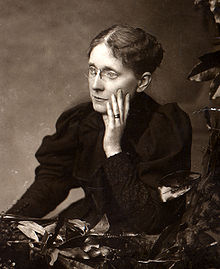
Built in 1910, and opened in January 1911. An addition was built in 1920. Willard was closed in 1982. Named for Frances Willard, reformer, born 1839.
Built in 1920 by the Richfield School District. Additions were built in 1923 and 1925. The school was annexed into Minneapolis along with the neighborhood in 1927. Richfield named the school after Teddy Roosevelt. Accordingly, Minneapolis called the school Richfield-Roosevelt until 1930. The School Board re-named the school for William Windom, Senator from Minnesota and U.S. Secretary of the Treasury, born 1827. Closed in 1978.
Built in 1867 as Third Ward School, and re-named Winthrop in 1878. From 1885 until it closed in 1890, Winthrop held grammar school and high school classes for East Side students. In 1890 Holmes took over as the high school for the East Side. Winthrop reopened in 1892 as a grammar school. In 1899, Winthrop was demolished, and East Side High was built on the site. Named for John Winthrop, the first governor of the Massachusetts Bay colony (born 1588).
Opened in 1966 at 107 SE 4th Street. Moved in 1972 to 2908 Colfax Avenue South.
SOURCES FOR THE SCHOOL INVENTORY
The following sources were basic to the making of this list. All the information here came from one of these sources, checked against the others. You can find these materials in the stacks of the downtown Minneapolis Public Library. For help, ask the librarians.
- 1. Directory of Teachers and General Information regarding Minneapolis Public Schools
- 2. Directory Minneapolis Public Schools
- 3. Personnel Directory Minneapolis Public Schools
- 4. Pupil-Personnel Sight Count, as of Oct. 17, 1978, Special School District No. 1, Minneapolis Public Schools
- 5. Pupil-Personnel Sight Count, as of Oct. 16, 1979, Special School District No. 1, Minneapolis Public Schools
- 6. Pupil-Personnel Sight Count, as of Oct. 13, 1981, Special School District No. 1, Minneapolis Public Schools
- 7. Student Accounting: Report of the Annual Racial/Ethnic Count of Students, as of Oct. 22, 1996 , Minneapolis Public Schools
- 8. Annual Report of the Board of Education of the City of Minneapolis
- Annual report of the Board of Education of the city of Minneapolis, W.D. for the year 1875-76, Minneapolis : Johnson & Smith, Steam Book and Job Printers,
- Annual report of the Board of Education of the city of Minneapolis for the year June 30, 1878, Minneapolis : Johnson & Smith, Steam Book and Job Printers,
- 9. Report of Board of Education of the City of Minneapolis for the School and Fiscal Years Ending June 30, 1912, June 30, 1913 and June 30, 1914,
- 10. Commercial Advertiser and Directory for St. Anthony and Minneapolis, for 1859-1860, H.E. Chamberlain, Publisher, St. Anthony and Minneapolis, 1859
- 11. Minneapolis City Directory for the Years 1865-6, E.P. Shaw, Publishers; Minneapolis, 1865
- 12. Merwin's Directory of Minneapolis and St. Anthony, 1867, Heman Merwin, Publishers, Minneapolis, 1867
- 13. Directory of the City of Minneapolis, Aug. 1, 1869, Francis P. Sweet, Tribune Printing Co., Minneapolis, 1869
- 14. Tribune Directory for Minneapolis and St. Anthony 1871-72, Tribune Printing Co., Minneapolis, 1871
- ditto for 1873-74 to 1876-77
- 15. Campbell's Minneapolis City Directory for 1877-78, Publisher; Johnson, Smith & Harrison, Publishers; Minneapolis, 1877
- ditto for 1874 to 1876
- 16. Minneapolis City Directory for 1878-79, Johnson, Smith & Harrison, Publishers; Minneapolis, 1878
- 17. Minneapolis City Directory for 1880-81, C. Wright Davison, Publisher; Johnson, Smith & Harrison, Publishers; Minneapolis, 1880
- ditto for 1879 to 1923
- 18. Minneapolis City Directory 1924, Minneapolis Directory Company, Publishers; Minneapolis, 1924
- ditto for 1925 to 1957
- 19. Minneapolis City Directory for 1958, R.L. Polk & Co., St. Paul, Minn.
- ditto for 1959 to 1999
- Atlas of Minneapolis, 1885
- Davison's Atlas of the City of Minneapolis, C. Wright Davison, Minneapolis, 1887
- Atlas of the City of Minneapolis, Minnesota, C.M. Foote, Minneapolis, 1898
- Atlas of Minneapolis, 1903
- Atlas of Minneapolis, Minneapolis Real Estate Board, 1914
- 1940 Atlas of the City of Minneapolis, Minnesota, City of Minneapolis, 1941
- Atlas of Minneapolis, 1984
- 22. History of Minneapolis and Hennepin County, Isaac Atwater and John H. Stevens, Munsell Publishing Co., New York & Chicago, 1895
- 23. Neill's History of Hennepin County and the City of Minneapolis, Rev. Edward O'Neill; North Star Publishing Co., Minneapolis; 1881
- 24. Minneapolis Journal, Nov. 26, 1903; Minneapolis History Section, p. 13
Annual directories of schools and teachers published by the Board of Education, including:
The downtown library has the 1899-1900, 1902-1903, 1903-1904, and 1908-1909 to 1911-1912 editions.
The downtown library has 1912-1913 to 1972-1973 editions.
The downtown library has 1973-1974 to 1999-2000 editions.
All the above include staff and addresses; list of schools and addresses; all school officials and members of the Board of Education, and their addresses. Other information published occasionally, such as: origin of name of school (1918/1919 to 1998/1999), programs, grades taught, etc. (from 1914/1915 on); year school was built and added to (from 1914/1915 on); and the districts which each school served (1914/1915 to 1943/1944).
Annual statistical analysis of the schools and programs
published for the preceding year each summer (except 1877). First edition published 1876 for West Division only (not for the St. Anthony side).
annually thereafter; library has volumes for school years ending 1878 through 1911, and 1924 through 1929.
Also, the library has the annual reports for calendar years 1963, 1964 and 1965; and for school years 1968/1969 through 1973/1974.
Minneapolis City Directories
20. Atlases of Minneapolis
The downtown library has the following:
21. Records, Title Office of the Hennepin County Recorder,
for the Mendenhall settlement
Narrative histories of Minneapolis:
View Minneapolis Schools in a larger map
"Thanks for visiting the site. Have a nice day!"--John Burroughs
 Minnesota Election Trends
Minnesota Election Trends